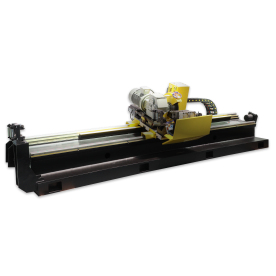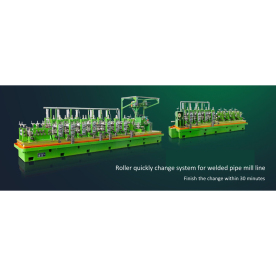[Roller for tube mill]Understanding the Role of Roller Components in Tube Mill Operations: Enhancing Efficiency and Quality in Metal Manufacturing
News 2024-12-27
Introduction
In the realm of metal manufacturing, tube mills play a pivotal role in shaping various metal products essential for countless industries. One of the key components that enhance the efficiency and quality of tube mills is the roller. These intricate parts are not just ancillary but are essential to the operation of tube mills, impacting everything from the initial shaping of metal stocks to the final output quality. This article explores the significance of rollers in tube mills, the various types available, and how they contribute to improved manufacturing processes.
The Basics of Tube Mills
Tube mills are specialized machines used to produce metal tubes and pipes through the processes of rolling, welding, and forming. They are primarily used in industries that require high volumes of tubes for applications such as construction, automotive, aerospace, and HVAC systems. The tube mill process generally involves feeding flat strips of metal into the mill, where rollers shape them into a tubular form before welding.
The Essential Role of Rollers in Tube Mills
Rollers are critical components of tube mills because they are responsible for the initial transformation of flat metal strips into round forms. They guide the material through the different stages of the tube-making process, ensuring that the correct shape and dimensions are achieved. The design and configuration of these rollers greatly influence production efficiency, material integrity, and finished product quality.
Types of Rollers Used in Tube Mills
There are several types of rollers used in tube mills, each serving a specific function based on the design of the machine and the type of tubing being produced. Some common types include:
1. **Forming Rollers**: These are primarily responsible for shaping the metal into its tubular form. They come in various configurations and sizes to match the dimensions required for different types of tubes.

Understanding the Role of Roller Components in Tube Mill Operations: Enhancing Efficiency and Quality in Metal Manufacturing
3. **Sizing Rollers**: Once the tube is formed and welded, sizing rollers adjust and standardize the diameter and ovality of the tube. This step is critical to meet the specifications set out by industry standards.
4. **Finishing Rollers**: After the sizing process, finishing rollers smooth out the surface of the tube, which improves the quality of the final product. This can also include polishing the tube to ensure a bright finish suitable for aesthetic applications.
Impact on Efficiency and Quality
The design and maintenance of rollers are crucial for achieving high operational efficiency in tube mills. Well-designed rollers reduce friction during the forming process, allowing for smoother material flow. This translates into fewer production bottlenecks, reduced wear and tear on equipment, and lower energy consumption.

Understanding the Role of Roller Components in Tube Mill Operations: Enhancing Efficiency and Quality in Metal Manufacturing

Understanding the Role of Roller Components in Tube Mill Operations: Enhancing Efficiency and Quality in Metal Manufacturing
With advancing technology, the development of rollers has also evolved. High-performance materials, such as advanced composites and treated metals, are now used in manufacturing rollers, providing better durability and wear resistance. Additionally, the use of CNC (Computer Numerical Control) machining allows for precision manufacturing of rollers, ensuring that they maintain tight tolerances and performance standards.
Recent innovations also include the integration of smart technologies, enabling real-time monitoring of roller conditions. Sensors can detect wear levels and alignment issues, allowing for predictive maintenance methods that can prevent downtime and reduce repair costs.
Conclusion
In conclusion, the role of roller components in tube mill operations is both fundamental and multifaceted. They are not simply mechanical parts but essential players in the production chain that affect efficiency, quality, and overall output. As the industry continues to evolve, the importance of investing in high-quality rollers and embracing technological advancements will only grow, securing the future of tube mill operations in a competitive manufacturing landscape. For businesses involved in metal manufacturing, recognizing the significance of rollers is the first step toward optimizing their processes and delivering high-quality products.
